Common problems with external wall insulation include moisture accumulation, inadequate ventilation, and installation errors that can reduce effectiveness and cause damage. You’ll need proper moisture control through vapor barriers, sufficient ventilation systems like trickle vents, and certified installers following manufacturer protocols. Regular maintenance, including annual inspections and repainting every 5-7 years, helps prevent issues. Understanding thermal bridging solutions and compliance requirements will guarantee your investment delivers peak performance and longevity.
Key Takeaways
- Moisture accumulation within walls can cause mold and material deterioration – prevent by installing proper vapor barriers and ensuring adequate ventilation.
- Poor installation quality leads to reduced effectiveness – hire certified contractors and follow manufacturer guidelines for proper fixing patterns.
- Thermal bridging through windows and joints reduces insulation performance – use thermal break connectors and extended insulation returns.
- Inadequate ventilation causes stale air and humidity – upgrade systems with trickle vents or MVHR solutions.
- Regular maintenance is crucial – conduct annual inspections, repair damaged seals, and repaint every 5-7 years to maintain effectiveness.
Moisture Buildup and Condensation Risks
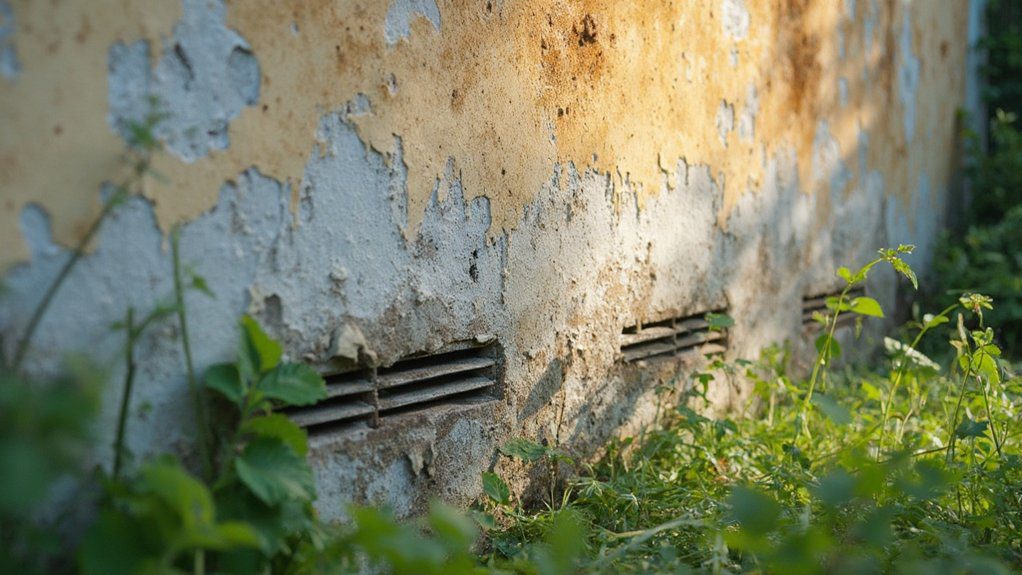
Although external wall insulation can greatly improve a building’s thermal performance, it may create conditions that promote moisture accumulation within wall assemblies.
You’ll need to understand how water vapor moves through your walls to implement effective moisture control strategies.
When you install external insulation, you’re changing your wall’s temperature gradient and dew point location.
If you don’t properly address ventilation and vapor barriers, you’ll risk condensation forming within the wall structure. This can lead to mold growth, deterioration of building materials, and reduced insulation effectiveness.
To guarantee proper condensation prevention, you’ll want to incorporate vapor-permeable materials where appropriate and maintain adequate air circulation.
It’s critical that you analyze your specific climate conditions and wall construction type to determine the most suitable moisture management approach.
Inadequate Ventilation Management
When external wall insulation is installed without proper ventilation considerations, it can greatly disrupt a building’s natural airflow patterns.
You’ll need to guarantee your ventilation systems are adjusted to compensate for the changed dynamics of air movement through your property’s envelope.
Without adequate air circulation, you’re likely to experience stale air, increased humidity levels, and potential health issues for occupants.
You’ll want to assess your existing ventilation systems and potentially upgrade them to maintain ideal indoor air quality. This might include installing additional trickle vents, mechanical ventilation with heat recovery (MVHR) systems, or passive air inlets.
Remember that your property’s ventilation requirements may change seasonally, so you should implement adjustable solutions that allow you to regulate airflow according to weather conditions and occupancy patterns.
Installation Errors and Poor Workmanship
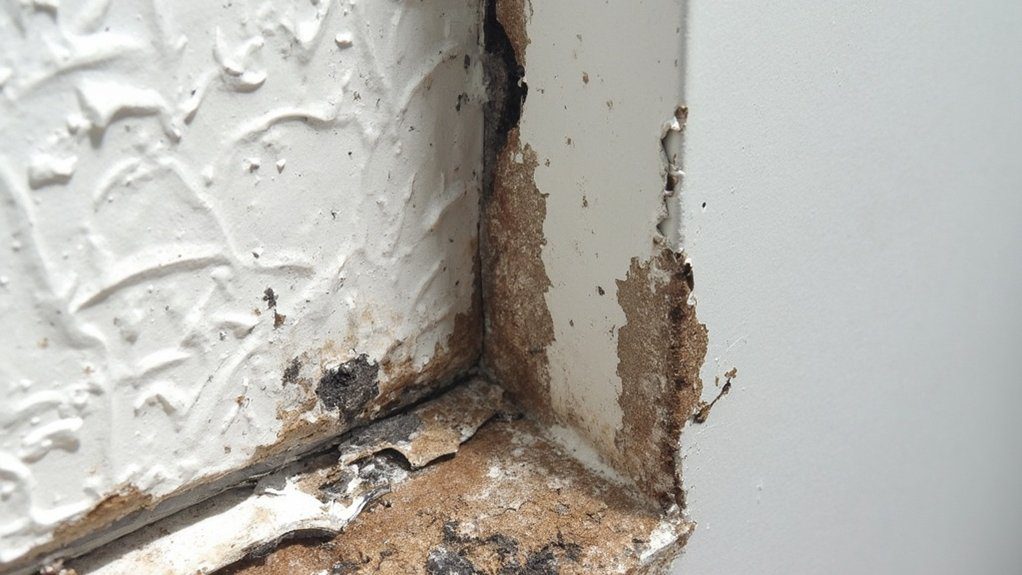
Poor installation techniques and substandard workmanship can severely compromise the effectiveness of external wall insulation systems.
You’ll need to watch for common errors like improper fixing patterns, insufficient mechanical anchors, and incorrect adhesive application that can lead to system failure.
To protect your investment, guarantee your contractor follows manufacturer-specified installation techniques and maintains strict quality assurance protocols.
You should verify they’re properly preparing wall surfaces, correctly mixing components, and maintaining consistent insulation board alignment.
Watch for adequate corner reinforcement and proper sealing around windows and doors.
If you spot uneven surfaces, visible fixing patterns, or gaps between boards, these are red flags indicating poor workmanship.
Consider hiring a certified inspector to verify the installation meets industry standards and building regulations before making final payment to your contractor.
Thermal Bridging Issues
Despite careful installation, thermal bridges can occur where building elements penetrate or interrupt the insulation layer, creating pathways for heat to escape. You’ll need to identify common thermal bridging points and implement proper solutions to maintain your insulation’s effectiveness.
| Location | Common Issues | Thermal Bridging Solutions |
|---|---|---|
| Windows | Heat loss around frames | Extended insulation returns |
| Balconies | Cold transfer through concrete | Thermal break connectors |
| Wall ties | Metal penetrations | Plastic-coated ties |
| Corner joints | Discontinuous insulation | Wrapped corner details |
When selecting insulation materials, you’ll want to evaluate products specifically designed to address thermal bridging. Look for specialized corner pieces, pre-formed window reveals, and purpose-made accessories that maintain the thermal envelope’s continuity. Remember that addressing thermal bridges isn’t just about energy efficiency – it also prevents condensation and mold growth at these vulnerable points.
Weather Damage and Deterioration
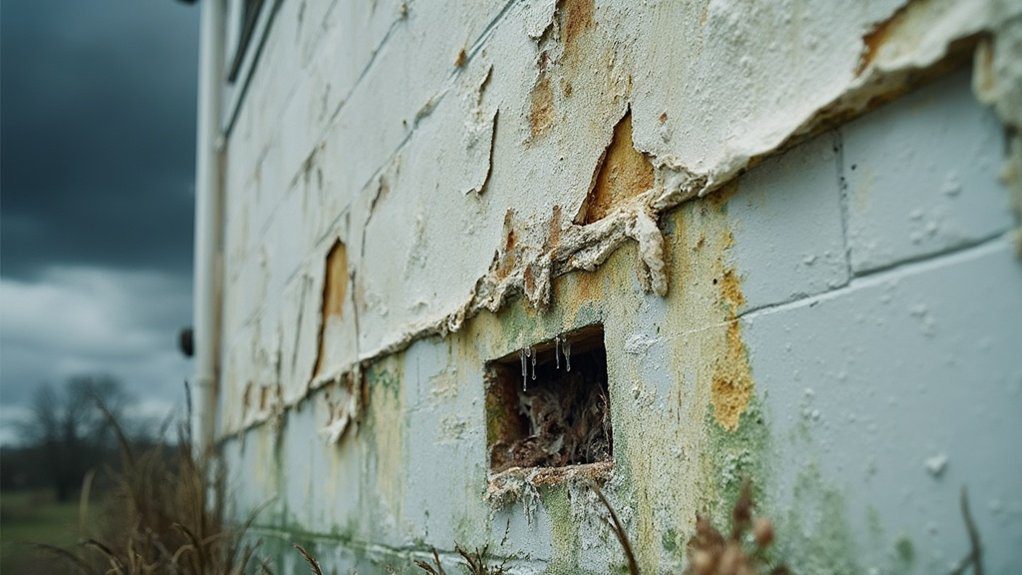
External wall insulation systems face significant weathering challenges that can compromise their long-term performance and durability.
You’ll need to monitor for UV degradation, freeze-thaw cycles, and wind-driven rain that can deteriorate the protective render and impact your insulation’s effectiveness.
To maximize your insulation lifespan, you’ll want to implement proven weather resistance strategies. These include installing proper drip edges, maintaining intact weatherproof seals around windows and joints, and ensuring your render system remains crack-free.
Regular inspections help you identify early signs of weather damage like surface crazing, discoloration, or render delamination.
When you spot deterioration, don’t delay repairs. Quick intervention prevents moisture ingress and maintains the system’s thermal performance.
Consider scheduling professional assessments every 2-3 years to evaluate your EWI’s weather resistance and overall condition.
Pest and Wildlife Infestation Concerns
While external wall insulation provides excellent thermal benefits, it can inadvertently create attractive habitats for various pests and wildlife.
You’ll need to carefully monitor your insulation for signs of nesting birds, rodents, and insects that may compromise its effectiveness. Common entry points include gaps around service penetrations, damaged sections, and unsealed joints.
To protect your investment, you’ll want to implement effective pest control strategies from the outset. These include installing specialized mesh barriers, applying wildlife deterrents around potential access points, and regularly inspecting for signs of infestation.
If you notice unusual noises, droppings, or visible damage, it’s essential to address these issues promptly.
Remember that prevention is more cost-effective than dealing with established infestations that can severely impact your insulation’s performance and your home’s structural integrity.
Material Compatibility Problems
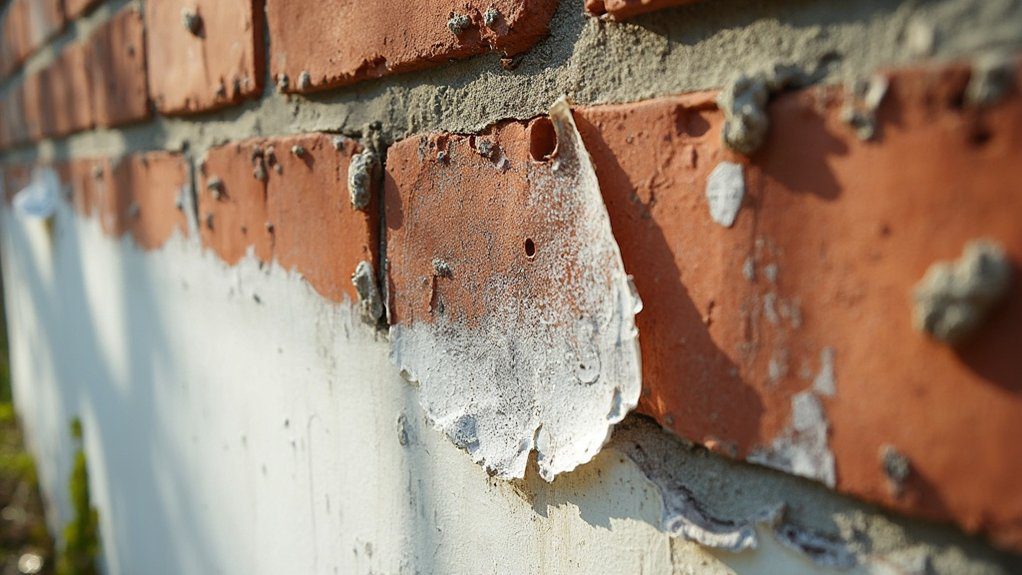
When selecting materials for external wall insulation, incompatibilities between different components can lead to significant structural and performance issues.
You’ll need to carefully evaluate how your chosen insulation materials interact with existing wall substrates, adhesives, and finishing renders.
Your material selection strategies should account for thermal expansion rates, chemical reactions, and moisture permeability between layers.
For example, if you’re using rigid foam insulation, you’ll want to verify your adhesive won’t degrade the foam’s structure over time.
Run thorough compatibility assessments before installation, checking how materials perform under various temperature and moisture conditions.
Consider how mechanical fixings might react with both the insulation and wall substrate.
Some metal fasteners can corrode when in contact with certain insulation materials, compromising your system’s integrity.
Cost and Long-term Maintenance Challenges
Investment costs for external wall insulation systems can present significant financial hurdles, typically ranging from $50-100 per square meter before accounting for specialized labor requirements.
You’ll need to factor in periodic maintenance costs, including inspection services, repairs, and potential material replacements over the system’s lifetime.
A thorough cost analysis will reveal that you’re looking at repainting every 5-7 years and addressing any cracks or damage promptly to prevent moisture infiltration.
Your maintenance planning should include annual inspections of seals around windows, doors, and other penetrations.
You’ll also need to budget for specialized cleaning to prevent algae growth and maintain the system’s appearance.
While the initial investment is substantial, proper maintenance scheduling can extend your insulation system’s lifespan beyond 25 years.
Building Regulations and Compliance Issues
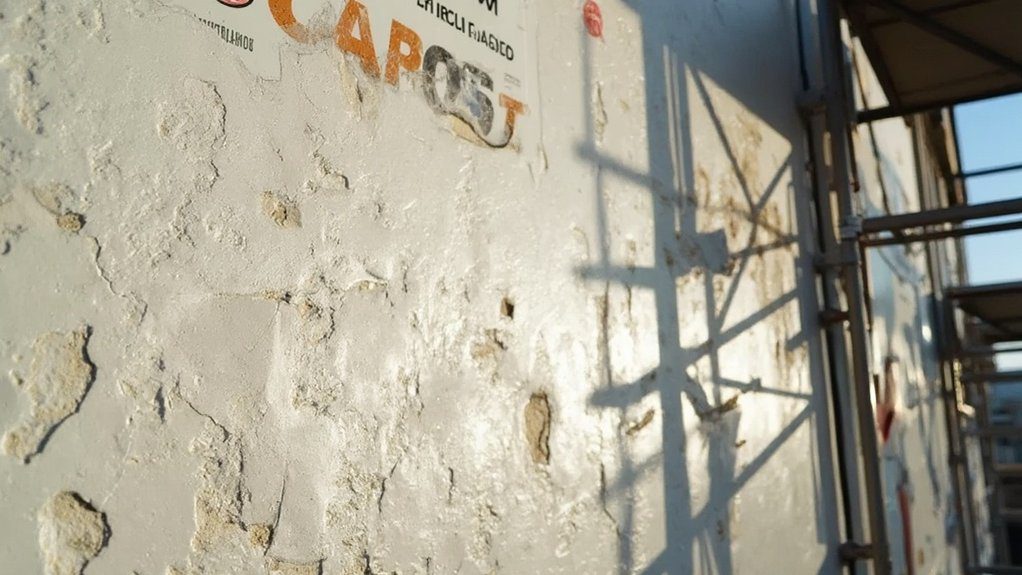
Before undertaking any external wall insulation project, you’ll need to navigate complex building regulations that vary markedly by jurisdiction and property type.
You’ll find that building codes often require specific U-values, fire safety ratings, and ventilation standards that your installation must meet.
Your project’s regulatory compliance hinges on several key factors: proper material certification, professional installation documentation, and adherence to local planning permissions.
You’ll need to guarantee your contractor understands current standards for weatherproofing, thermal bridging prevention, and condensation control.
Many jurisdictions also mandate periodic inspections and compliance certificates.
If you’re retrofitting a listed building or one in a conservation area, you’ll face additional restrictions.
Working with a certified installer who understands these requirements will help you avoid costly corrections and potential legal issues.
Impact on Property Aesthetics and Value
External wall insulation extends beyond regulatory requirements to greatly alter your property’s visual characteristics and market position. When properly executed, it can enhance your home’s curb appeal and boost property valuation through modernized facades and clean architectural lines.
| Aesthetic Impact | Value Impact | Market Position |
|---|---|---|
| Modern finish | Energy savings | Buyer attraction |
| Smooth surfaces | ROI potential | Green credentials |
| Color options | Price premium | Market advantage |
You’ll need to carefully evaluate design choices, as poor installation or inappropriate finishing materials can detract from your property’s appearance. The finishing coat selection greatly influences both aesthetics and durability. While lighter colors reflect heat better, they may show dirt more easily. Darker shades absorb more heat but can provide a more striking visual impact. Your choice affects both thermal performance and resale prospects.
Frequently Asked Questions
Can External Wall Insulation Be Installed While Tenants Occupy the Building?
Yes, you can install external wall insulation while tenants occupy the building, but you’ll need proper tenant communication and installation safety protocols. Most work happens outside, minimizing disruption to your building’s occupants.
How Long Does a Typical External Wall Insulation Installation Take?
While you might worry it’ll take months, your external wall insulation project duration typically spans 2-3 weeks for an average home. The installation timeline can vary based on your property’s size and complexity.
Will External Wall Insulation Affect My Home’s Satellite TV Reception?
You might experience satellite interference depending on your insulation materials’ thickness and dish position. If needed, you can adjust your satellite dish’s mounting or relocate it to maintain ideal signal reception.
Can Solar Panels Be Installed Over External Wall Insulation?
Like stacking building blocks, you can install solar panels over external wall insulation. You’ll need to assess solar panel compatibility and insulation thickness considerations to guarantee proper mounting brackets and structural support work together.
Does External Wall Insulation Require Planning Permission in Conservation Areas?
You’ll need planning permission in conservation areas for external wall insulation. Local planning regulations and conservation guidelines are strict, so you must consult your council before making any alterations to your property.
Conclusion
Despite your meticulous planning for external wall insulation, you’ll inevitably discover that moisture finds its way precisely where you don’t want it, and ventilation systems refuse to cooperate according to specifications. Yet, by adhering to technical standards, implementing proper moisture barriers, and maintaining systematic inspection protocols, you’re preventing far more significant issues than the ones you’re solving—which is, ironically, the mark of successful external wall insulation management.

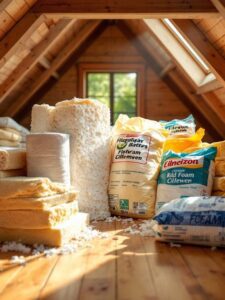
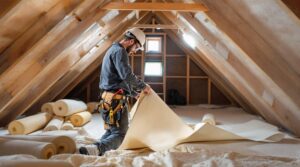

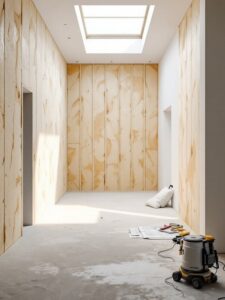



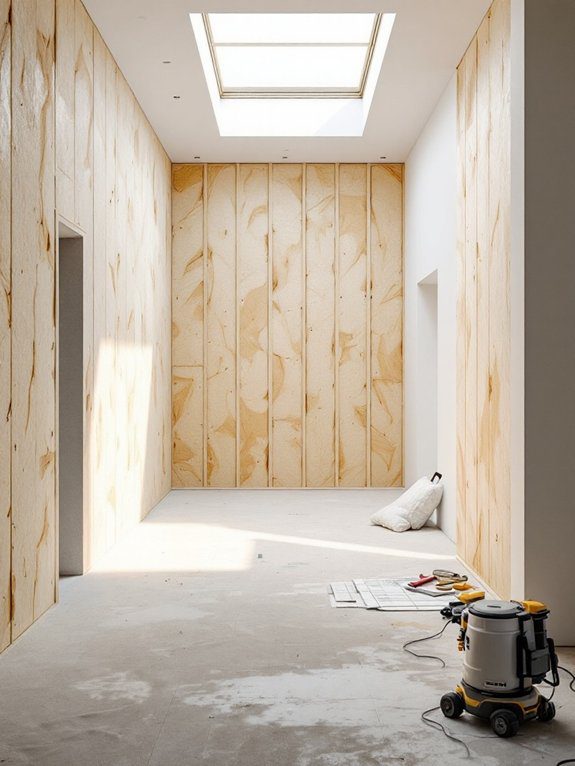
2 Responses
Hey! I know this is somewhat off topic but I was wondering if you knew where I could get a captcha plugin for my comment form? I’m using the same blog platform as yours and I’m having problems finding one? Thanks a lot!
888starz loyalty program lets players earn exclusive rewards while they play.
code promo 888starz https://888starz-bet-casino.com/eg/promocode-egypt/